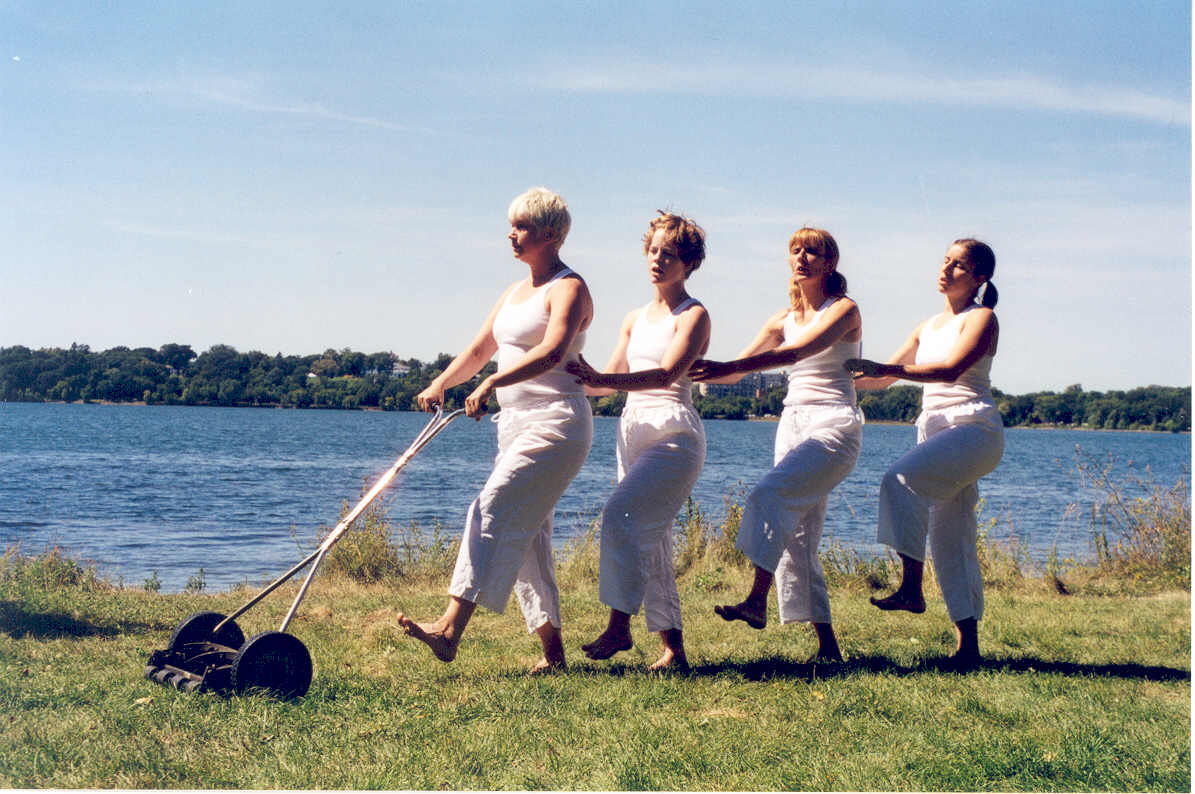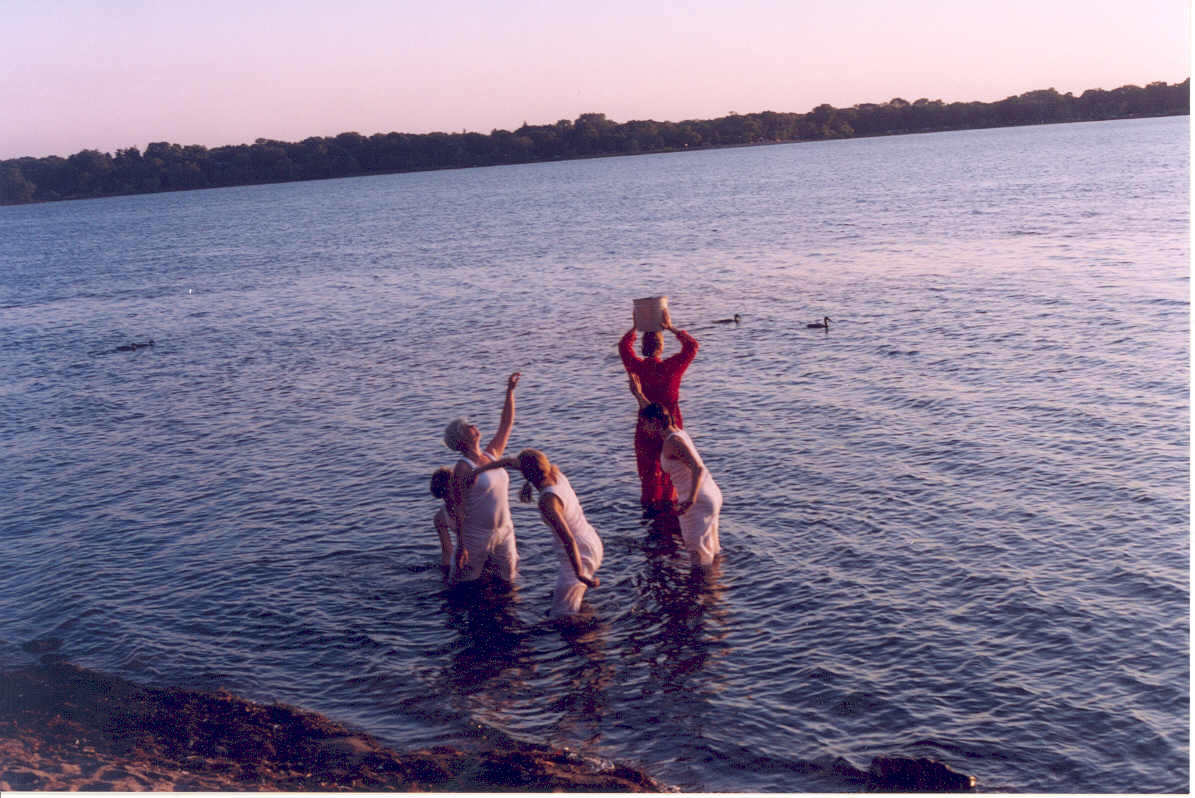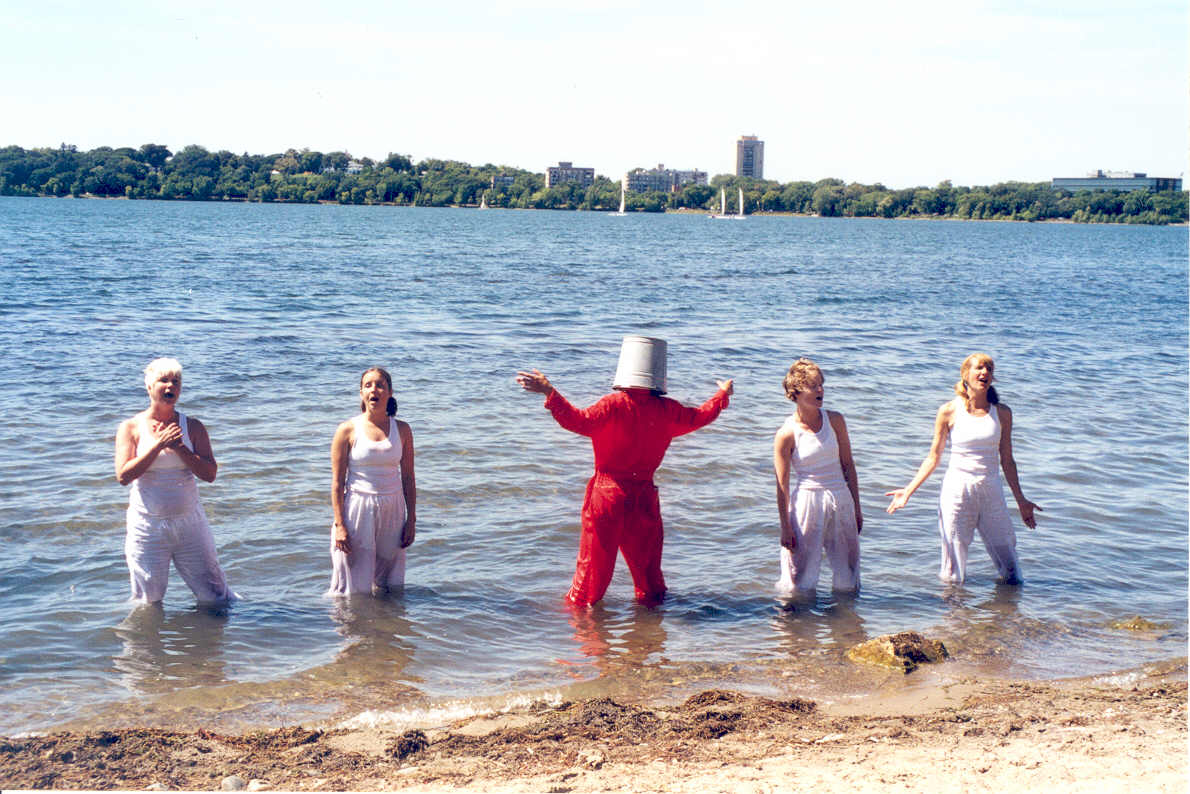Political Bodies: Dance in the Lakes
Passersby at Lake Calhoun and Lake Nokomis paused to take in a site-specific dance performance with an environmental theme last weekend as choreographer Cynthia Stevens and four other dancers used art to send a political message.



The dancers performed “Bodies of Water” a total of ten times over two weekends in August to small clusters of people who gathered at the water’s edge as the five dancers moved in and out of the lake.
Across the beach, an odd quartet advanced, stepping slowly and deliberately in single file behind a push mower. Garbed entirely in white, Lisa Carlson, Megan Flood, Melissa Kennedy and Cynthia Stevens came into view, singing.
“My lawn’s run off/ And it’s killing me,” the quartet crooned. “Your lawn devotion/ Is killing the ocean.”
Opposite them in a bright orange jumpsuit, Barbara Meyer used a tin bucket as a makeshift megaphone to amplify her voice. “Things are going down the drain!” she yelled.
Entering the water, the dancers began chanting the names of lakes and rivers, reminding the audience of how pervasive pollution can be in affecting water quality.
Stevens employed song and humor to make a timely election year plea for environmental awareness. “Someone is confused about what is sacred and profane/ George Bush has a four letter word in his name,” the dancers sang. “Let’s kick Tex back home and vote for John Kerry.”
Original music for “Bodies of Water” was written by Annie Enneking and Kate Lynch in collaboration with Stevens. A fairly unusual approach for a dance performance, the songs succeeded in making the overt political message fun and accessible to most.
Audience reaction to the 15 minute piece varied; some cheered, others shrugged, a few seemed genuinely moved by the closing song. “Remember, remember/ We are all bodies of water,” the women sang.
By making “Bodies of Water” a free outdoor performance, Stevens made her dance accessible to a much more general audience than those who normally attend dance in the theater. In this dance, the lake itself became part of the choreography, a sixth body to be reckoned with and set in motion with the other five performers. It’s the kind of work that simply can’t be done inside a theater.